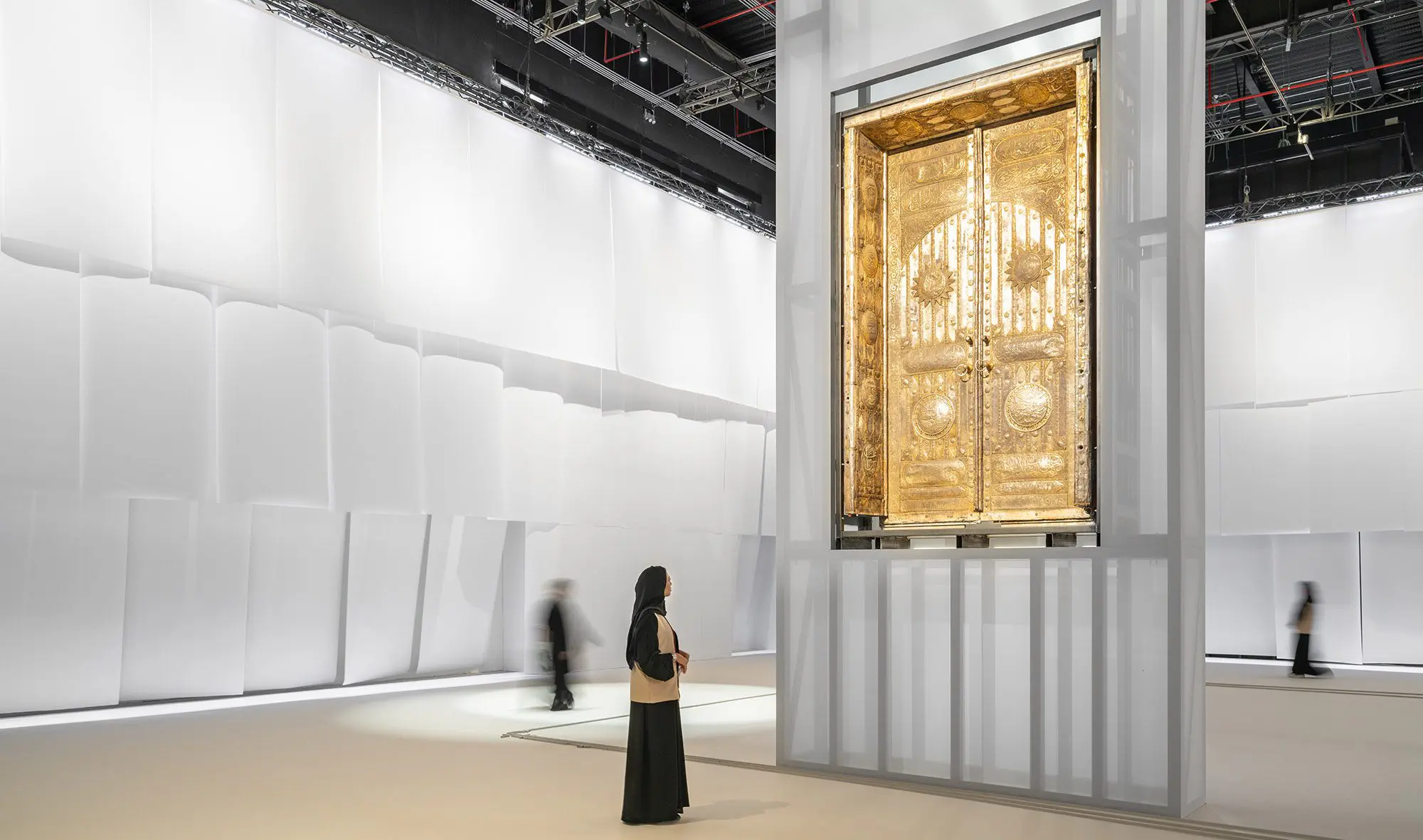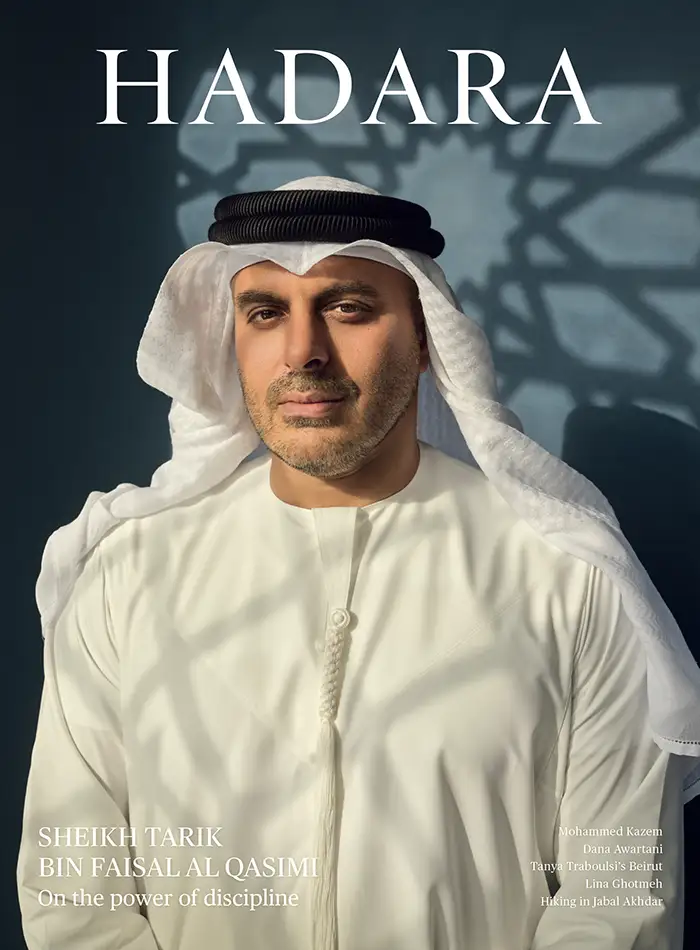A staging of past and present
Jeddah’s Islamic Arts Biennale brings together centuries of faith and artistic expression.
By Rebecca Anne Proctor
The scale of this Islamic art festival is quite staggering. The first Islamic Arts Biennale in Jeddah, organised by the Diriyah Biennale Foundation, features 60 newly commissioned conceptual, abstract, photographic and installation works alongside 280 heritage works from Saudi and international collections—15 of them never seen before.
Architecture studio OMA designed galleries for the biennale under the canopies of the Western Hajj Terminal of King Abdulaziz International Airport, where pilgrims from around the world arrive en route to the Hajj, the Muslim pilgrimage to Mecca and Medina.
The location links contemporary and historic artworks with the birthplace of Islam. The theme Awwal Bait, or First House, evokes the symbolic unity of the Holy Kaaba, the building at the centre of the Masjid Al-Haram in Mecca, Islam’s most important mosque. The biennale is oriented in the direction of the Qiblah, where Muslims face when engaged in prayer.
“Seeing the biennale come to life through the voices and perspectives of our artists has been profound,” says Sumayya Vally, the biennale’s artistic director. “At its essence, this biennale is about giving contemporary objects a home by giving them a lineage and giving historic objects a home by giving them a future.”
The exhibition moves from darkness to light literally and metaphorically, like a spiritual journey. The dialogue between historical and contemporary works is stimulating. The conceptual installation Letters in Light, Lines We Write (2023) by Saudi artist Muhannad Shono is placed near a series of intricately rendered 17th century astrolabes, Qurans, and old Islamic manuscripts. Bangladeshi artist Kamruzzaman Shadhin’s The River Remembers (2023) explores themes of migration through several monumental hanging veils of different coloured threads with brass disks. The work recalls stories of his homeland through the metaphor of the river and the idea that unseen forces like the flow of water can disrupt the course of one’s life. Outdoors, in My Place is the Placeless (2023), by London-based Iranian artist Shahpour Pouyan, three large, coloured domes represent architectural structures in various countries reflecting the artist’s diverse ethnic origins, challenging rigid perceptions of ethnic identity and ideas of home and belonging.
The Islamic Arts Biennale runs until April 23.
The biennale features a spectacular Kaaba door created for King Abdulaziz bin Abdulrahman Al Saud. Photo: Marco Cappelletti




